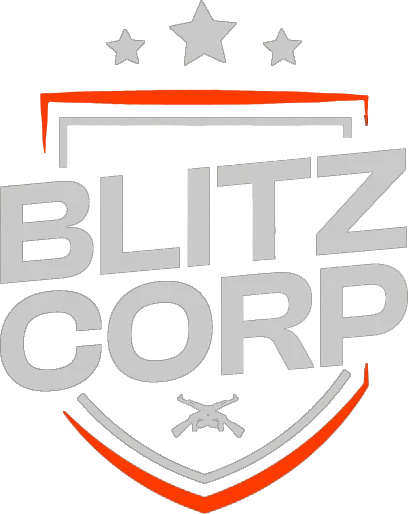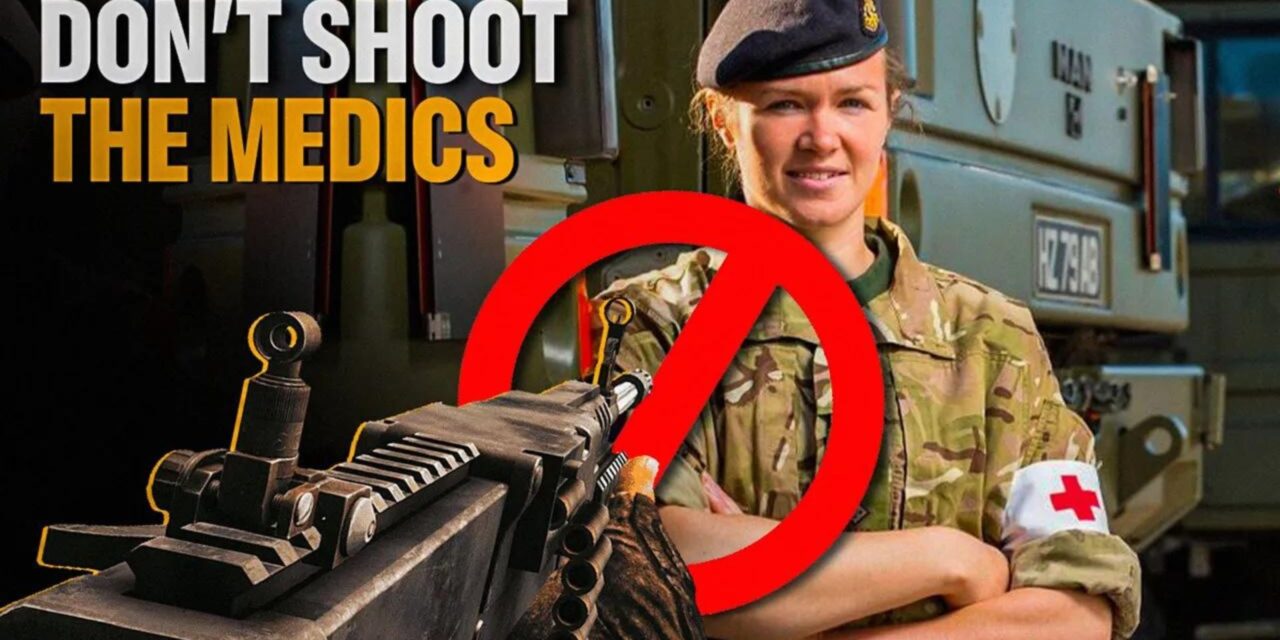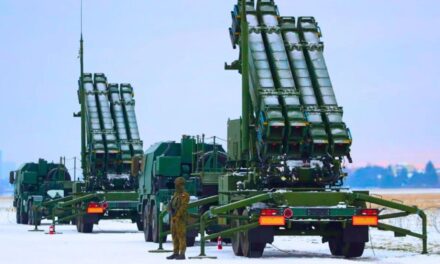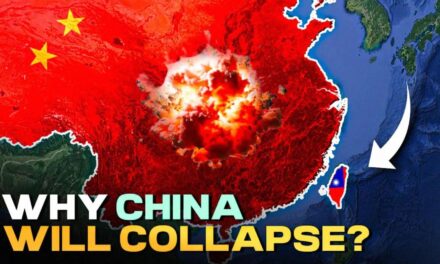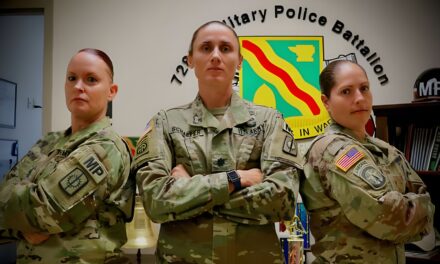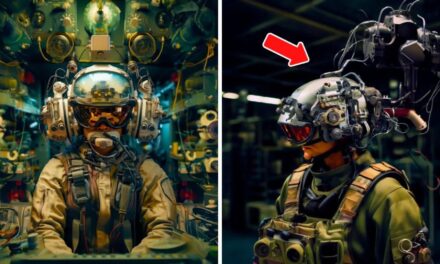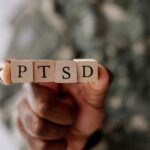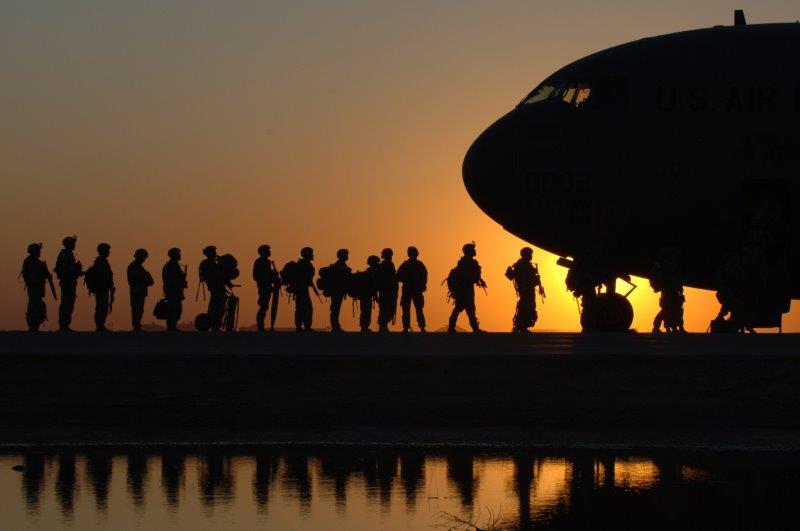In the midst of armed conflict, medics and other medical personnel serve a vital humanitarian function—providing urgent care to the countless wounded and sick, whether civilians or combatants. Their selfless efforts to save lives embody human decency even amid the horrors of war. However, despite the noble and neutral nature of their work, medical workers are far from immune to the violence of warfare.
On the contrary, they have increasingly become deliberate targets in recent conflicts. This begs the crucial question: Are medics protected in war and under international law or are they just tragic targets in war? Let’s take an in-depth look at the complex rules and sobering realities surrounding the protection of medical personnel during hostilities.
Key Takeaways:
- The Geneva Conventions and other international laws provide special protections for medical personnel in war, designating them as non-combatants who must be respected and protected.
- Medical personnel must refrain from hostile acts and focus solely on their humanitarian duties to retain their protected status.
- Carrying light weapons for self-defense is permitted, but participating in combat leads to loss of protection.
- Challenges to implementing these protections stem from disregard of the laws of war and the blurring of distinctions between combatants and medical personnel.
- Upholding the neutral status of medical personnel remains critical but difficult in modern irregular and unconventional conflicts.
Protection of Medical Personnel Under International Humanitarian Law
The privileged status and safeguards for medical personnel engaged in armed conflicts are rooted in the Geneva Conventions of 1949 and their Additional Protocols, the keystone treaties of international humanitarian law. What exactly do these instruments have to say about protecting medical workers in war? Let’s examine some of the key provisions:
The Geneva Conventions Provide Special Protections
Several articles of the Geneva Conventions explicitly confer protections on medical personnel:
- Article 24 of the First Geneva Convention states that medical personnel "shall be respected and protected in all circumstances."
- Article 36 of the Second Geneva Convention specifies similar protections for the personnel of hospital ships.
- Article 20 of the Fourth Geneva Convention requires respect and protection for medical personnel in occupied territories.
These particular articles apply specifically to international armed conflicts between nation-states.
Respect and Protection Must Be Afforded to Medical Personnel
Beyond the general protections in the original 1949 treaties, Additional Protocol I expanded the safeguards to expressly cover civilian medical personnel in Article 15. This provision obligates parties to a conflict to provide all available assistance to civilian medics if their services are disrupted by military activity. Additional Protocol I governs international conflicts.
For non-international conflicts, Common Article 3 implicitly requires respect for medical personnel through its mandate to care for the wounded and sick. Additional Protocol II then clearly stipulates that medical personnel "shall be granted all available help for the performance of their duties" and "shall not be compelled to carry out tasks which are not compatible with their humanitarian mission."
Who Qualifies as Protected Medical Personnel?
Now that we've surveyed the key protections, who exactly constitutes "medical personnel" entitled to such privileges under international law? Just like the rules and law that determine whether or not medical personnel like nurses can be classified as first responders only certain medical roles can be protected on the battlefield. The term refers to those assigned exclusively to medical duties, whether temporarily or permanently, such as:
- Military medical personnel - doctors, medics, nurses, etc. serving in the armed forces
- Civilian doctors and paramedics - medical professionals not enlisted in the armed forces
- Red Cross/Red Crescent organizations - workers from these authorized humanitarian societies
- Other authorized aid societies - personnel from recognized medical relief agencies
To qualify for protection, medical personnel must be readily identifiable through the Red Cross/Red Crescent/Red Crystal emblems and focused entirely on humanitarian medical responsibilities, not combat.
| Red Cross | Red Crescent | Red Crystal |
|---|---|---|
 |
The emblems used to mark medical personnel, facilities, and activities
Rights and Responsibilities of Medical Personnel in Armed Conflict
While international law grants protections to medical personnel, what are their responsibilities? To maintain their privileged status, certain rules must be followed:
Medical Personnel Must Refrain from Hostile Acts
Under the laws of war, medical personnel forfeit their protections if they commit hostile acts outside their strictly humanitarian function. Taking direct part in combat operations or other actions harmful to the enemy are grounds for loss of protected status.
They Are Allowed to Carry Arms for Self-Defense
However, medical personnel may carry light individual weapons for self-defense and protection of the wounded and sick under their care. This right originated in the 1906 and 1929 Geneva Conventions and is now recognized in the First Geneva Convention and Additional Protocol I.
Obligation to Provide Impartial Care to All
A core tenet of medical ethics requires providing care impartially to all wounded and sick, whether friend or foe. International law stipulates medical personnel cannot be punished for acting in accordance with such medical ethics, regardless of who benefits from their treatment. They also cannot be compelled to prioritize certain patients over others for non-medical reasons.
Historical Perspectives on Medics in Armed Conflicts
Throughout history, medics have played a crucial role in providing medical assistance during armed conflicts. Their unwavering dedication and selflessness have saved countless lives on the battlefield. One of the most iconic examples of medics in action occurred on the beaches of Normandy during the pivotal D-Day invasion of World War II. This historic event showcased the bravery and resilience of the medics who faced immense challenges in their mission to provide vital medical care.

Medics on the Beaches of Normandy During D-Day
The Normandy landings, also known as D-Day, took place on June 6, 1944, and marked a significant turning point in World War II. As Allied forces stormed the beaches of Normandy to liberate Western Europe from Nazi occupation, medics played a critical role in providing immediate aid and life-saving medical treatment to wounded soldiers.
The medics faced daunting challenges in their efforts to evacuate and treat the wounded. The beach landing zones were heavily fortified, and the medics had to navigate through intense gunfire and hostile conditions to reach the injured soldiers. With limited resources and under constant enemy fire, they performed life-saving procedures and provided essential care while risking their own lives.
Evacuation Challenges in World War II Battlefields
The evacuation of wounded soldiers from World War II battlefields presented significant challenges for medics. The intense fighting and the sheer scale of casualties made it extremely difficult to provide timely medical assistance and transport wounded soldiers to safer locations for further treatment.
The chaotic nature of the battlefield, combined with the constant threat of enemy attacks, made the evacuation process even more perilous. Medics had to prioritize those in critical condition and make difficult decisions when resources were scarce. They worked tirelessly to stabilize the wounded and ensured that the most severely injured received immediate attention.
| Evacuation Challenges Faced: | Solutions Implemented: |
|---|---|
| Transportation difficulties | Improvisation of makeshift stretchers and vehicles |
| Lack of medical supplies | Creativity in utilizing available resources |
| Constant enemy fire | Adaptation of evasive maneuvers and seeking cover |
The table above highlights some of the evacuation challenges faced by medics in World War II battlefields and the innovative solutions they employed to overcome these obstacles. It underscores the resourcefulness and resilience displayed by medics in the face of adversity.
The Reality Faced by Medics in Modern Warfare
In modern warfare, combat medics confront the harsh realities of providing medical care on the front lines. They willingly put their lives at risk to treat and save the lives of injured soldiers in dangerous and volatile environments.
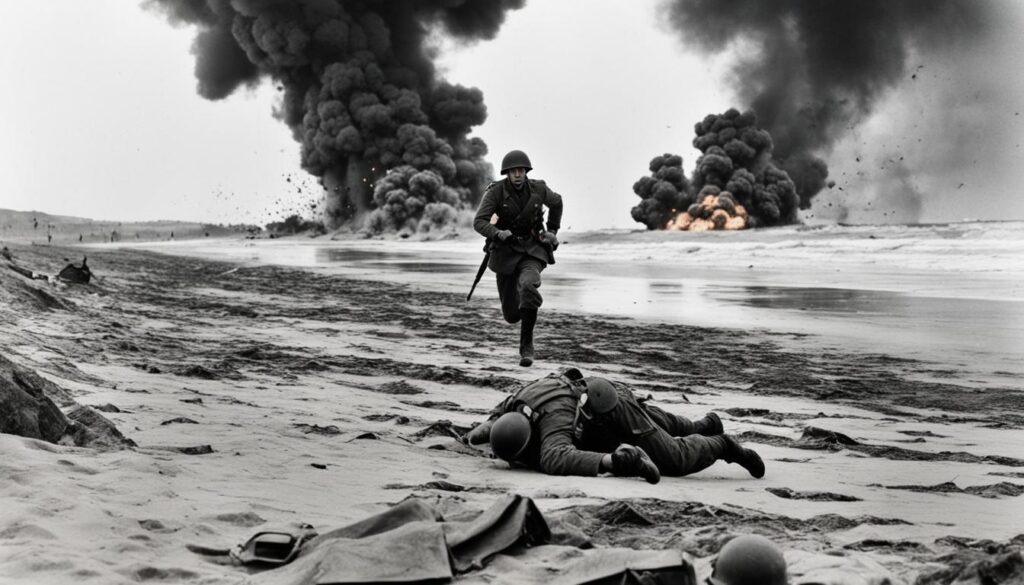
Combat Medics in Contemporary Armed Conflicts
Combat medics play a vital role in contemporary armed conflicts, where their skills and expertise are crucial in saving lives. These highly trained medical professionals are deployed alongside military units and provide immediate medical assistance in combat zones.
Combat medics face numerous challenges in their line of work. They often operate under extreme pressure, working under fire while treating injured soldiers in the midst of ongoing hostilities. They must make split-second decisions and prioritize the medical needs of wounded individuals, often in chaotic and high-stress situations.
In addition to the physical risks they face, combat medics also deal with the emotional toll of witnessing the devastating impact of war on individuals and communities. They experience the trauma of losing patients and are constantly exposed to the horrors of war.
Instances of Medical Personnel Targeting
Tragically, instances of targeting and deliberate attacks on medical personnel have been documented in contemporary armed conflicts. This disturbing trend raises serious concerns about the safety and protection of medics in the midst of warfare.
Targeting medical personnel is not only a violation of international humanitarian law but also undermines the principle of medical neutrality - the idea that medical personnel should be respected and protected regardless of the sides involved in the conflict. These acts of violence not only put medics' lives at risk but also jeopardize the provision of medical assistance to wounded individuals.
Instances of targeting and attacks on medical personnel highlight the urgent need to emphasize and enforce the protection of medics in times of war. Efforts must be made at the international level to ensure that those providing medical care on the front lines are safeguarded and recognized as impartial actors in armed conflicts.
Combat medics are unsung heroes in modern warfare, risking their lives to save others amidst the chaos and destruction. Their dedication and bravery deserve recognition, and measures must be taken to protect them from harm.
Challenges to the Protection of Medical Personnel in Modern Warfare
While these rules establish crucial protections on paper, the hard realities of contemporary armed conflicts pose major challenges to their implementation in practice:

Disregard for the Laws of War by Some Parties
One overarching challenge stems from armed groups, militants, and even state actors who disregard their obligations under international law or deliberately target protected persons. The Geneva Conventions require reciprocal commitments by all parties engaged in hostilities, but violations still abound.
Blurring of Lines Between Combatants and Medical Personnel
Another pervasive issue is the increasing blurring of distinctions between combatants and medical staff. When medics take direct part in fighting or armed forces disguise themselves as medics, it becomes challenging to distinguish lawful targets from protected medical personnel. Tactics like false use of the Red Cross emblem also endanger legitimate humanitarian workers.
Increased Targeting of Medical Facilities and Workers
Most alarmingly, there are deeply troubling patterns of intentional attacks directly targeting hospitals, ambulances, and medical staff in recent conflicts. Given their specially protected status under international law, such attacks undoubtedly constitute war crimes. However, perpetrators often enjoy impunity.
"We are facing an epidemic of attacks on healthcare—outrageous breaches of international humanitarian law."
- Peter Maurer, President of the International Committee of the Red Cross
Upholding the Rules: The ICRC's Role in Promoting Respect for Medical Personnel
Amid the flagrant disregard of principles protecting medical personnel, the International Committee of the Red Cross (ICRC) works tirelessly across conflict zones worldwide to demand greater respect for international humanitarian law. Some of their efforts include:
- Documenting and verifying attacks on medical workers and facilities. Last year alone, the ICRC confirmed over 600 such incidents affecting personnel, hospitals, ambulances, and more.
- Engaging in confidential dialogue with parties to conflicts who violate these rules, urging them to comply with their legal duties.
- Publicly speaking out against violations when private dialogue fails, leveraging the ICRC's unique humanitarian mandate and principles of neutrality, independence and impartiality.
- Providing comprehensive guidance and training on protections for medical personnel through publications, seminars, and integration into military doctrine.
- Supplying medical facilities with expert resources and practical implementing advice on the rules and rights related to their humanitarian operations.
Did You Know: During World War II, conscientious objectors in the United States who refused military service on ethical grounds were often assigned as medics to assist battlefield wounded and sick. These non-combatant medics saved countless lives through their humanitarian medical work.
All in all, the ICRC plays an indispensable role in not only enforcing but strengthening knowledge and compliance with international law among armed forces around the world. Their steadfast commitment to protecting medical personnel helps uphold human dignity amidst the horrors of war.
Conclusion: The Vital Importance of Safeguarding Medical Personnel in Armed Conflict
In conclusion, while medical personnel fulfill an inherently humanitarian mission during armed conflict, upholding their neutral protected status in practice remains an ongoing challenge. All parties engaged in hostilities must respect the international laws that facilitate impartial medical care for victims of conflict. Though difficult to implement amidst the chaos of war, defending the principle of non-combatant protections for medical workers is an ethical imperative. When healers and humanitarians become targets, human suffering is needlessly magnified in unconscionable ways.
Frequently Asked Questions
Below are some common questions regarding the rules and realities surrounding the protection of medical personnel during armed conflict:
Q: Are military medics considered non-combatants?
A: Yes, military medics are generally deemed non-combatants under international law. The Geneva Conventions designate medical personnel as protected persons who cannot be attacked, provided they avoid hostile acts and focus solely on medical responsibilities.
Q: Can medics use weapons in war?
A: Medics are permitted to carry light individual weapons like pistols for self-defense and protection of patients, but use of arms directly in combat (beyond self-defense) is prohibited and leads to loss of protections.
Q: Do medics have to treat the enemy wounded?
A: Yes, impartial care for all wounded is a core principle of medical ethics. International law bars compelling medics to prioritize certain patients for non-medical reasons and punishing them for adhering to ethics.
Q: Are attacks on medics considered a war crime?
A: Intentionally attacking medical personnel, provided they have not surrendered protection by committing hostile acts, constitutes a war crime under international law. However, such crimes frequently go unpunished.
Q: What protections exist for medical personnel in war?
A: The main protections derive from the Geneva Conventions and Additional Protocols requiring respect and protection for medical personnel at all times. They must be identifiable through emblems like the Red Cross and may carry arms for self-defense without forfeiting status.
Q: How does the ICRC promote respect for medics in war?
A: The ICRC documents attacks, conducts private dialogues with responsible parties, speaks out publicly when needed, and provides training on rules protecting medical personnel - leveraging their position as a neutral humanitarian organization.
Q: How do the rules apply in civil wars?
A: In non-international armed conflicts, Common Article 3 and Additional Protocol II provide baseline protections for medical personnel. However, compliance by non-state armed groups poses difficulties in civil wars.
Let me know if you need any clarification or have additional questions! I'm happy to discuss this complex topic further. The protection of impartial medical care in armed conflict is a vital but vexing issue that warrants ongoing examination, dialogue and effort by the international community.
Q: What protections exist for medical units and their administration under international law?
A: The Geneva Conventions and Additional Protocols provide specific protections for fixed establishments like military field hospitals and other medical units. They cannot be attacked or have their administration interfered with, as long as they are not used to commit hostile acts outside their medical functions. Their permanent or temporary staff are also protected.
Q: Can members of the armed forces with medical training be compelled to serve in a medical capacity if captured?
A: Under the Third Geneva Convention, prisoners of war who are military medical personnel may be required to use their skills to treat fellow POWs, preferably from their own force's medical service. This upholds medical ethics while aiding wounded or sick prisoners.
Q: How are military and civilian medical personnel affiliated with Red Crescent societies protected?
A: The Red Crescent's authorized medical workers are protected as medical personnel under international law if they are exclusively assigned to medical duties by a party to the conflict. Their protective emblems must be respected and they must receive any supplies needed to provide impartial care.
Q: What role does rule 25 of customary law play in protecting medical personnel?
A: Rule 25 affirms that personnel exclusively assigned to medical duties must always be respected and protected. This customary norm applies to both international and non-international conflicts and helps ensure care for the wounded and sick.
Q: How are medics protected during combat activity and the administration of medical units? A: Medics are safeguarded under the Geneva Conventions, which stipulate that medical personnel, including those involved in the administration of medical units, should be respected and protected during combat activity. This includes the transport or treatment of the wounded and sick. The conventions clearly state that intentionally targeting medics bearing distinctive emblems or insignia is a war crime. Despite these protections, the reality on the ground can be complex, especially when facing irregular forces or insurgents who may not adhere to international laws.
Q: What role do medics play in civil defence and for medical purposes during war? A: In the context of civil defence, medics play a crucial role in the prevention of disease and treatment of the wounded, sick, and shipwrecked. They are responsible for providing emergency medical care, often under challenging conditions, and ensuring that medical purposes such as treatment and stabilization of patients are met, which is vital for maintaining the health and effectiveness of military personnel and civilians alike.
